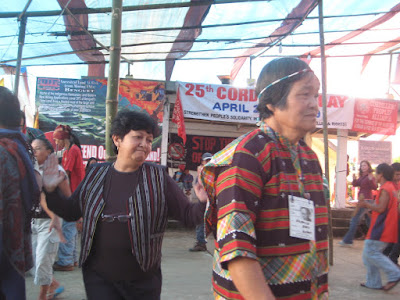
Introducing the African night crawler
Some complex problems have simple solutions, and a handful of worms may be the answer to the biodegradeable wastes of Baguio city.
On June 13 and 14, thirty people gathered at St. Scholastica Convent to learn the theory and practice of vermicomposting. We were lucky to have Michael Cagas as our teacher, who has built his expertise through seven years of focused practice, experimentation, and teaching of vermiculture and vermicomposting. Though some of us went to the training with doubts about caring for worms, we all left with our bayongs-full of worms, determined to start our own backyard and household vermicomposting, and do our share in solving the garbage problem in the city.
The African night crawler looks like our own native earth worm, in size and color. Unlike the native earthworm, it is flatbellied, which enables it to crawl on a flat wall. Also it does not burrow or bore holes in the earth, and prefers to stay on the surface. Thus, this worm is no threat to the rice paddies, like the giant earthworms now destroying the Banaue rice terraces. Michael allayed the fears of some participants that this worm would become a pest or invasive species, by explaining that it actually needs care and and protection from pests and predators like chickens, frogs, insects. Thus, they would not be able to survive and thrive, if they are not given the ideal environment and home.
One kilo of worms can eat one kilo of organic wastes in a day, and turn this into vermicast, which is a superior type of organic fertilizer. Furthermore, the organic waste is reduced to a fraction of its original volume. Thus, a handful of worms inside a sako, with appropriate bedding materials, can serve as a perpetual bin for household biodegradeable wastes. In other words, your trash bin does not get full because the worms are consuming them and processing them into smaller amounts of vermicompost. Isn't this a wonderful way to manage our organic wastes?
So, what can we put into the sako? All kitchen wastes, like fruit and vegetable peelings, garden trimming, banana stalks, sayote, even pig, chicken, and horse manure. This does not produce bad odors, because the good bacteria are able to fight the bad bacteria.
We learned about the needs, behavior, mating patterns of the African night crawler. Hopefully, this knowledge will help us culture the worms so that they reproduce, and allow us to share a handful of worms to our neighbors and friends. Participants to the training included indigenous migrants, urban poor, gardeners of several convents, NGO workers, and organic farmers.
Thus, if you want to join this worm initiative, ask around, try to find your neighbors who do not produce any biodegradeable wastes, and request a handful of worms for your own household.#



















